Isuzu D-Max/ Mazda BT-50: New world order
/In flagship format, the latest additions to ute-dom raise the standard without forgoing their roots.
D-Max X-Terrain/ BT-50 Limited
Prices: Isuzu $75,490/ Mazda $60,990.
Powertrain and economy: 3.0-litre turbo-diesel four-cylinder, 140kW/450Nm, 6-speed automatic, 4WD, combined economy 8.0L/100km, CO2 208g/km.
Vital statistics: 5265mm (D-Max)/5280mm (BT-50) long, 1870mm wide, 1790mm high, 3125mm wheelbase, 18-inch alloy wheels.
We like: Isuzu - class-leading safety tech, big step up in comfort and driving feel; Mazda – looks good, quality interior.
We don't like: Isuzu - price inequality with Mazda equivalent; Mazda – loses dash-top cubby, poor cupholder design. Both - engine could be gruntier, challenging electronic interfaces.
(Mazda BT-50 off-road images Callum Crawley).
HOW much ‘ute-ness’ is retained?
It’s a question that anyone interesting in migrating to the Isuzu D-Max and Mazda BT-50 might imagine has become relevant. In flagship format, both represent as massive steps forward, not just for their respective brands, but also for their genre. The hefty technology loadings, the easier driving, the plushness of the cabins … it’s surely steering these models toward comparison with classy SUVs or even top-drawer cars, right?
Which is a nice dream, but reality is that as much as the BT-50 Limited and D-Max X-Terrain deliver car-like levels of comfort and safety, they’re still utes at heart. Which is great. Smartly dressed and appointed utes are to be celebrated, but there’s no point raising the standard and losing the core appeal.
The D-Max and BT-50 get the work-play, rough-and-schmooze ratio pretty much just right. They’re the smartest guys in a crowded room when it comes to occupant protection, with mutual adoption of new safety technologies that are often reserved for luxury brands, content, comforts and quality. And yet, when asked to do an honest day’s work? Well, they won’t shirk that call, either, being fundamentally excellent toilers, which tick a great many boxes: Tough built with a decent engine, solid driveline and heavy tow capacity. Nice.
In terms of pure primal talent, picking which is the best is basically a coin toss. Unfortunately for Isuzu, if a decision is to be based purely on dollars being spent, then it’s a Mazda home run, so great is the latter’s price advantage.
The consolation for Isuzu-ites who aim to remain brand-loyal at any price is that they cannot feel short-changed by the improvements in design and development they’re getting.
It is fair to say that there has never previously been a D-Max that is as polished or well-presented as the X-Terrain is now. Those who have known the old will surely be stunned by what they achieve in transition.
The BT-50 also has a fresh start feel. As it should, being the first Mazda pick-up or light commercial utility vehicle not to be built alongside a Ford equivalent for almost 60 years. Ending one marriage ang going to another still brings badge-engineering consequence, but at least now Mazda is able to offer a specification and smarts that Ford cold-heartedness denied the old BT-50.
Sizing up a BT-50 against D-Max reminds Mazda is Isuzu’s customer. Their truck is made on Isuzu’s production line, in a common factory in Thailand. Hiroshima’s side has been allowed to restyle, but no more. The technology, the chassis, the drivetrain … all are entirely Isuzu. Everything about the mechanical and dynamic set-up has been Isuzu’s remit. No Mazda ‘zoom zoom’ evidences.
That the test examples didn’t drive identically was solely due to tyre difference. Both ran factory 18-inch rims but Isuzu’s were shod with an aftermarket Maxxis 980 Bravo A/T that, while a superior off-road choice than the Bridgestone Dueller 265/60 type that’s standard, trade off with significantly enhanced road roar and a less resolved on-seal feel.
The walkaround is intriguing. Which looks better? Potentially, the Isuzu as a whole is more to convention and there’s an aggressiveness to its clipped form that is highly agreeable; it also has a more recognisable ute silhouette.
The Mazda is more modern in appearance, however, which bodes well for it standing the test of time. Dimensions between both lines are all but aped, yet expect to hear that the BT-50 is bigger. A side-effect of the talk of it having taken inspiration from the stance of a sumo wrestler?
Mazda knows too well how challenging it can be to carry car design cues into utes; the previous model was badly botched. This time, happily, the passenger trademarks of a broad shapely grille and squinty LED headlights – just as powerful and decent as Isuzu’s, by the way - the wheel arch shapes genuinely suit.
What Mazda has done inside the cabin to differentiate is above and beyond; they probably didn’t have to change their dials to usual in-house style, and altering the air vents immediately on either side of the centre screen – the latter having forced a change of glovebox design – and revising the dash top shape seems an expensive execution in pursuit of ‘Mazda-ness’. But its this and the silver metallic-look trim that run from the doors across the dashboard that lend impression of the BT-50 being more executive-minded.
Also appreciated is Mazda’s extra thoughtfulness in delivering additional finishing touches, absent from X-Terrain; sun visors incorporating mirrors and illumination, an auto-dipping rear vision mirror and heated front seats are enhancements that’ll help sell it to those looking for an SUV ambience with traydeck convenience.
If the Isuzu seems more utilitarian, it does have some good unique touches. The dashtop lidded cubby is a great asset ignored by Mazda. The Mazda has cupholders between the seats that are more like bottle holders; you will lose a smaller coffee cup down there and it'll be messy to retrieve it. Not a problem with Isuzu’s clever pop-out cup holders, sited near the outer air-vents.
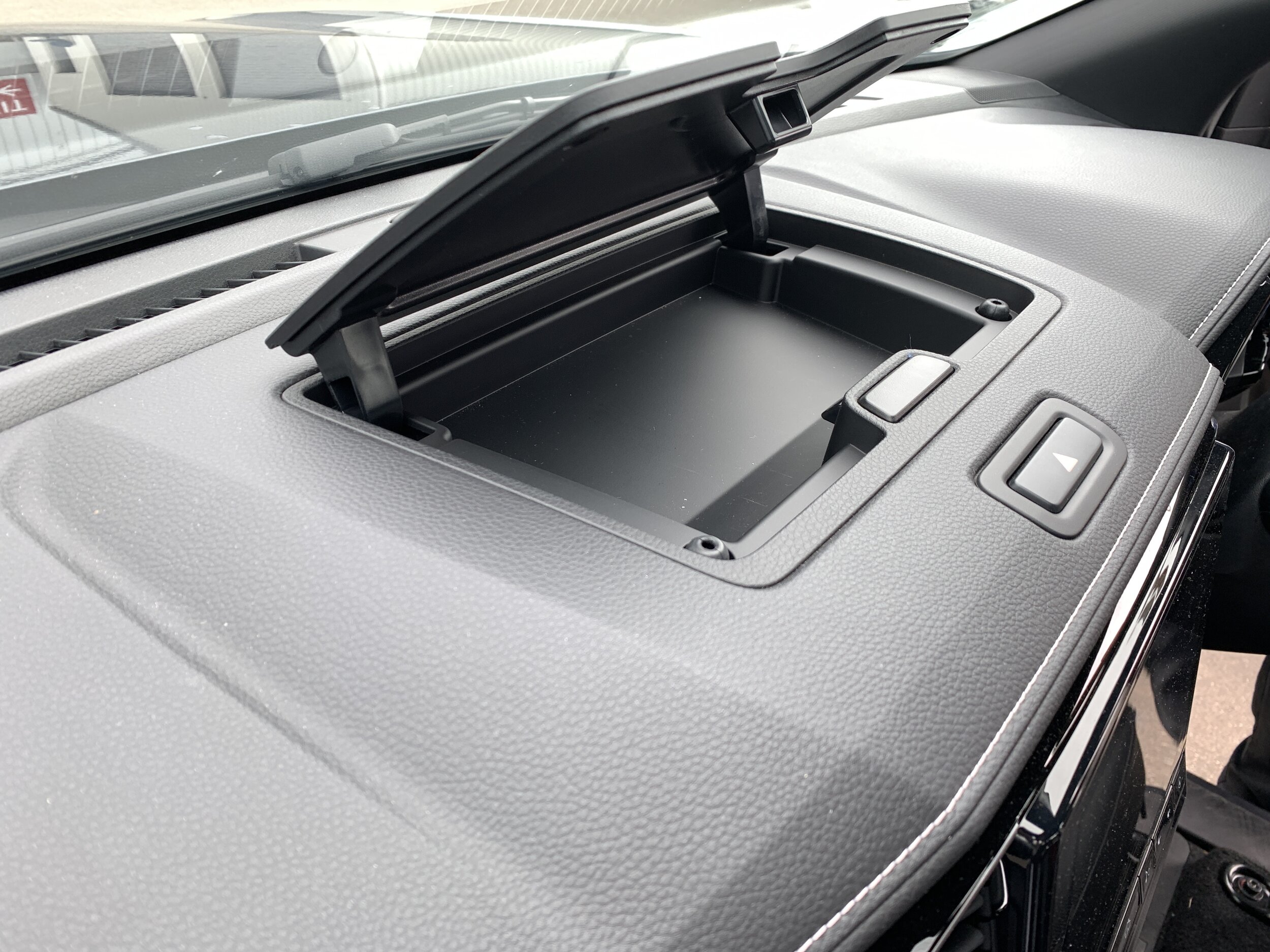
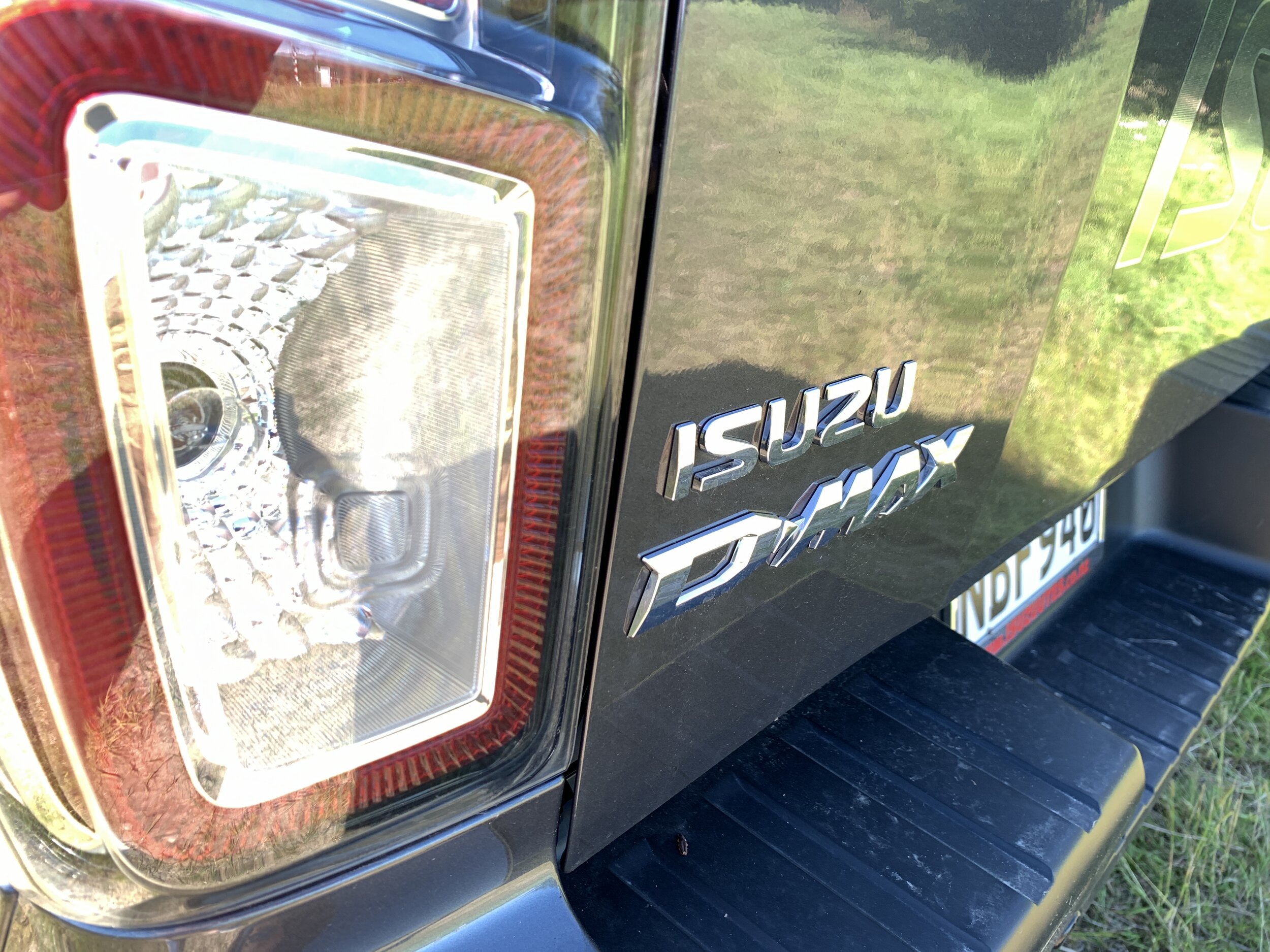
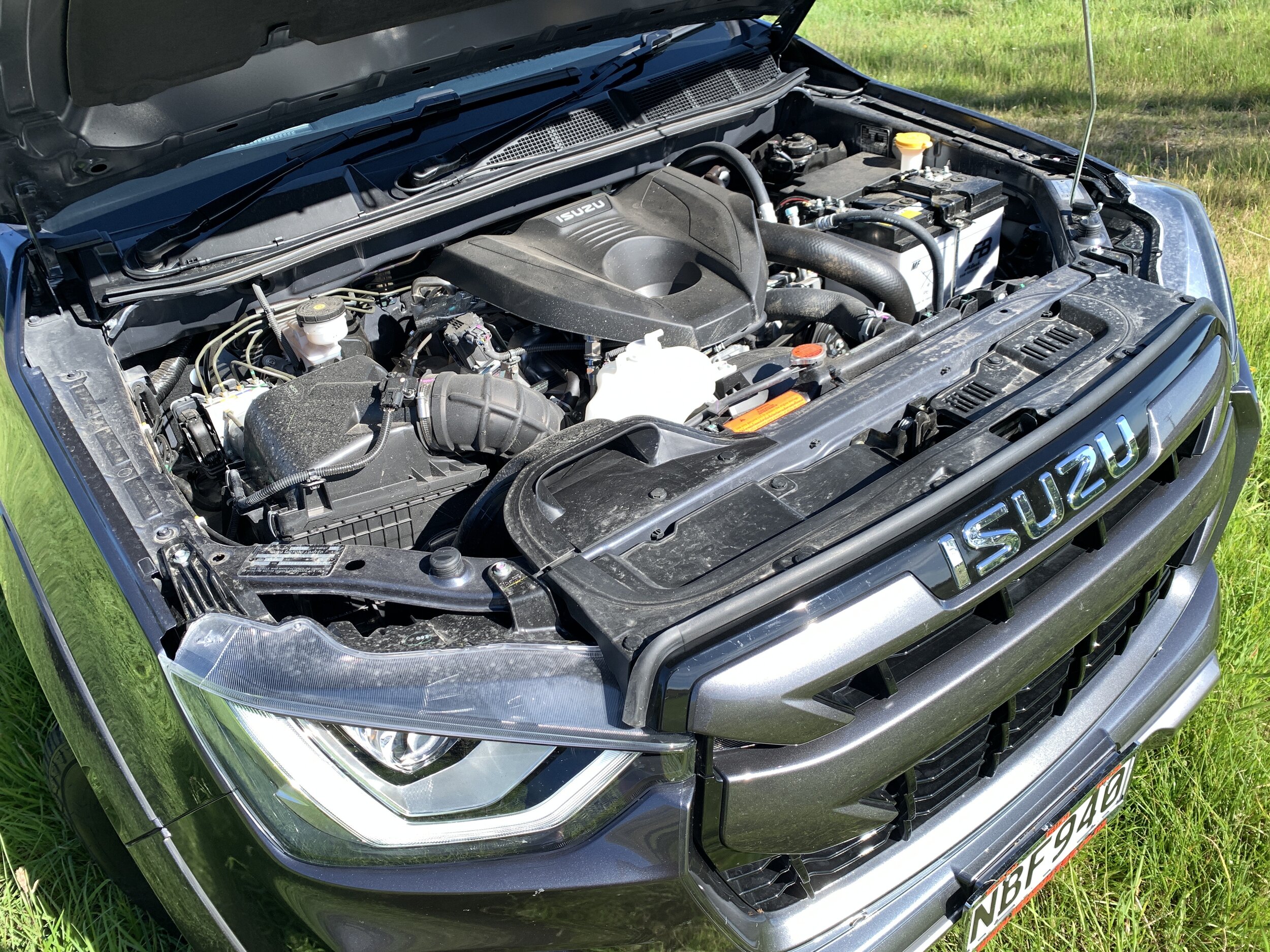
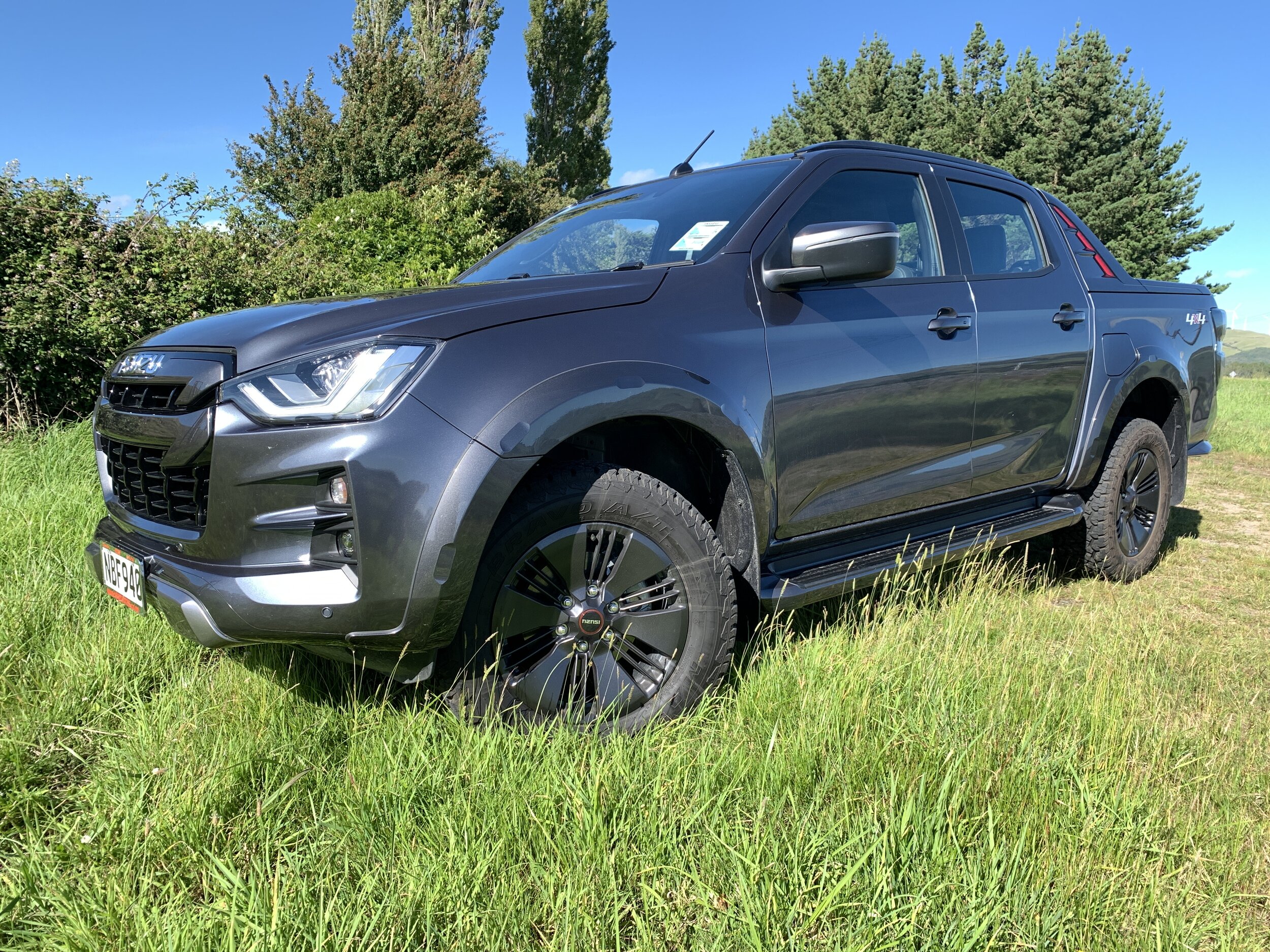
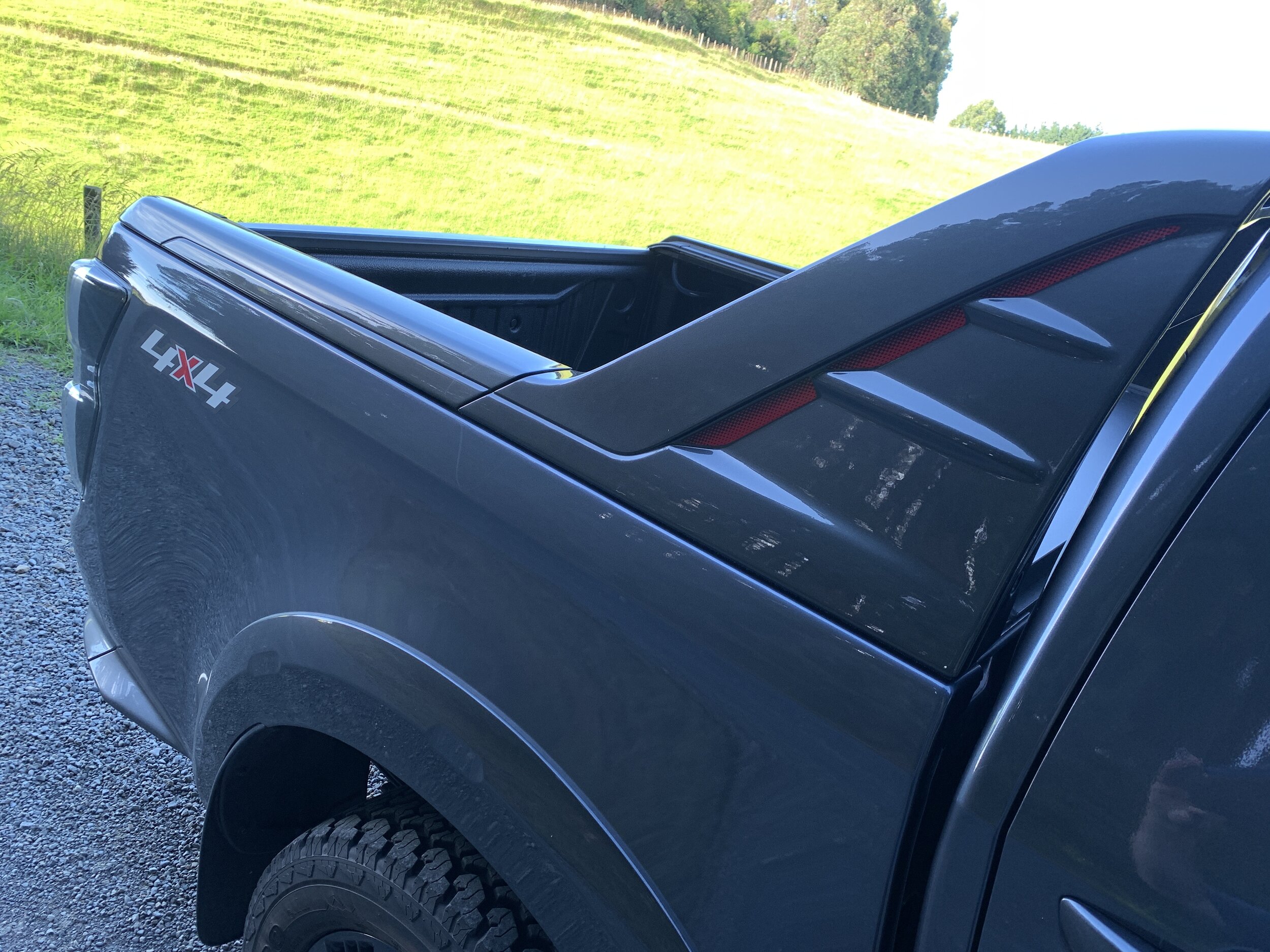
Beyond that, it’s all common territory. Same broad, soft but comfy seats, steering wheel and major controls and so on. Both dress their seats in leather – black with Isuzu, a more controversial brown with Mazda – and there's good adjustment for the driver to achieve a decent driving position: Rake and reach adjustment for the steering, height adjust for the driver's seat, and lumbar adjustment too.
The driver's electric seat adjustment is eight-way, but there are no memory settings. The passenger seat lacks any electric adjustment, which might irk more in the X-Terrain, given it being in a semi-premium price band. The back seats in each are comfy, though – as is common for utes – you have to put up with a near-vertical seat back, with excellent leg and head room. There is enough room for three adults to fit across, and two ISOFIX and two top-tether loops allow two child seats in the back.
The models’ electric assists and infotainment features are a tour de force, no argument, and all that imprint is also Isuzu-led. The safety and assist systems’ integration is solid; the functions that warn of the potential of an imminent collision, keep the vehicle within its lane, alert to a change in speed zone are perhaps a touch nanny-ish at times – and you’ll perhaps tire of it sounding warning chimes – yet you shouldn’t diss this stuff. It might save your skin.
Likewise, the utes’ off-road aides are nicely inprinted; it’s easy to scroll from rear-wheel-drive into the all-wheel-drive modes and, especially when the rear diff lock is engaged (for no obvious reason, a tricky business in the BT-50), it’s impressively confident through a gnarly landscape.
It's the integration and implementation of the on-cabin information and infotainment systems where the wheels fall off. Isuzu has taken on a mammoth task in corralling a wide span of data flows and driver involvements for scrutiny (just look at how much of the Bible-sized handbook is given over to its operability). But they’ve tried too hard and come up short. Mazda must be wishing it could have delivered its version with the same MZD format that goes into its cars.
All sorts of things don’t quite come off. The Android Auto and Apple CarPlay options are respectively via USB and wireless and USB-connect; clever, yes, but it would have been smarter still with an inductive charging pad. When a phone is wirelessly relaying, it’s chomping through the power. Tethering fixes this, but surely makes the Bluetooth link unnecessary.
The graphics of both screens are surprisingly basic and the fiddliness in operability, especially of the one in front of the driver which contains core driving data, becomes a test of patience, not least when deep-diving into the sub-menus. It’s also unfortunate the large screen seems prone to glitch. Both examples were hit by occasional screen freeze, phone system deactivation and slow prompt responses. Does that suggest a firmware issue?
Still, the depth of the safety kit is brilliant. Buy into either range and regardless of the variant you get eight airbags, autonomous emergency braking, stop/go adaptive cruise, blind spot detection, lane departure warning/assist, forward collision avoidance, drive attention warning, automatic high-beam lights, rain-sensing wipers and a reversing camera. Perhaps one of the most interesting inclusions is the front-centre airbag - to protect those in the front seats in the event of a side impact. That is required for a five-star ANCAP rating under 2020 criteria, D-Max and BT-50 are the only utes to have it.
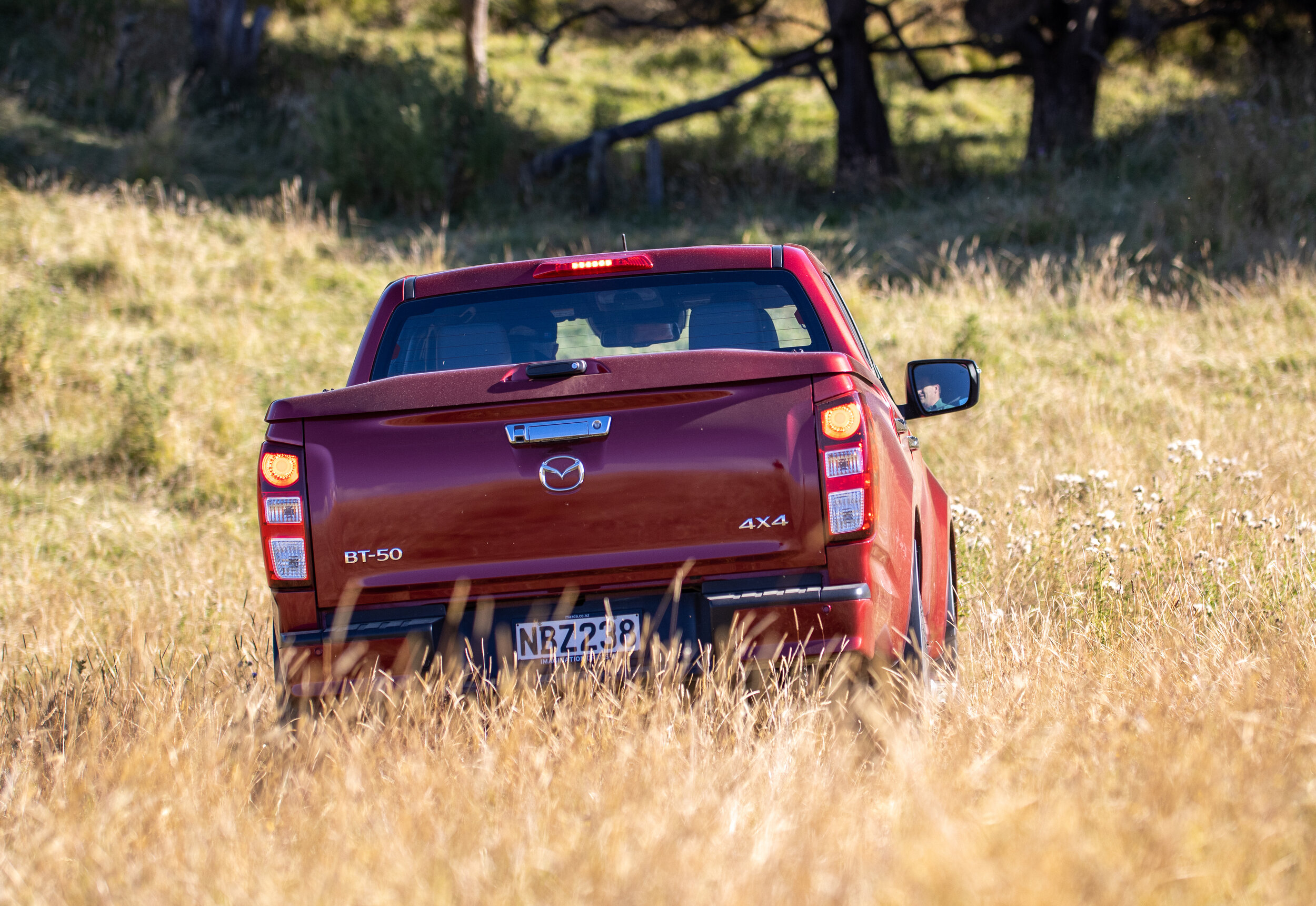
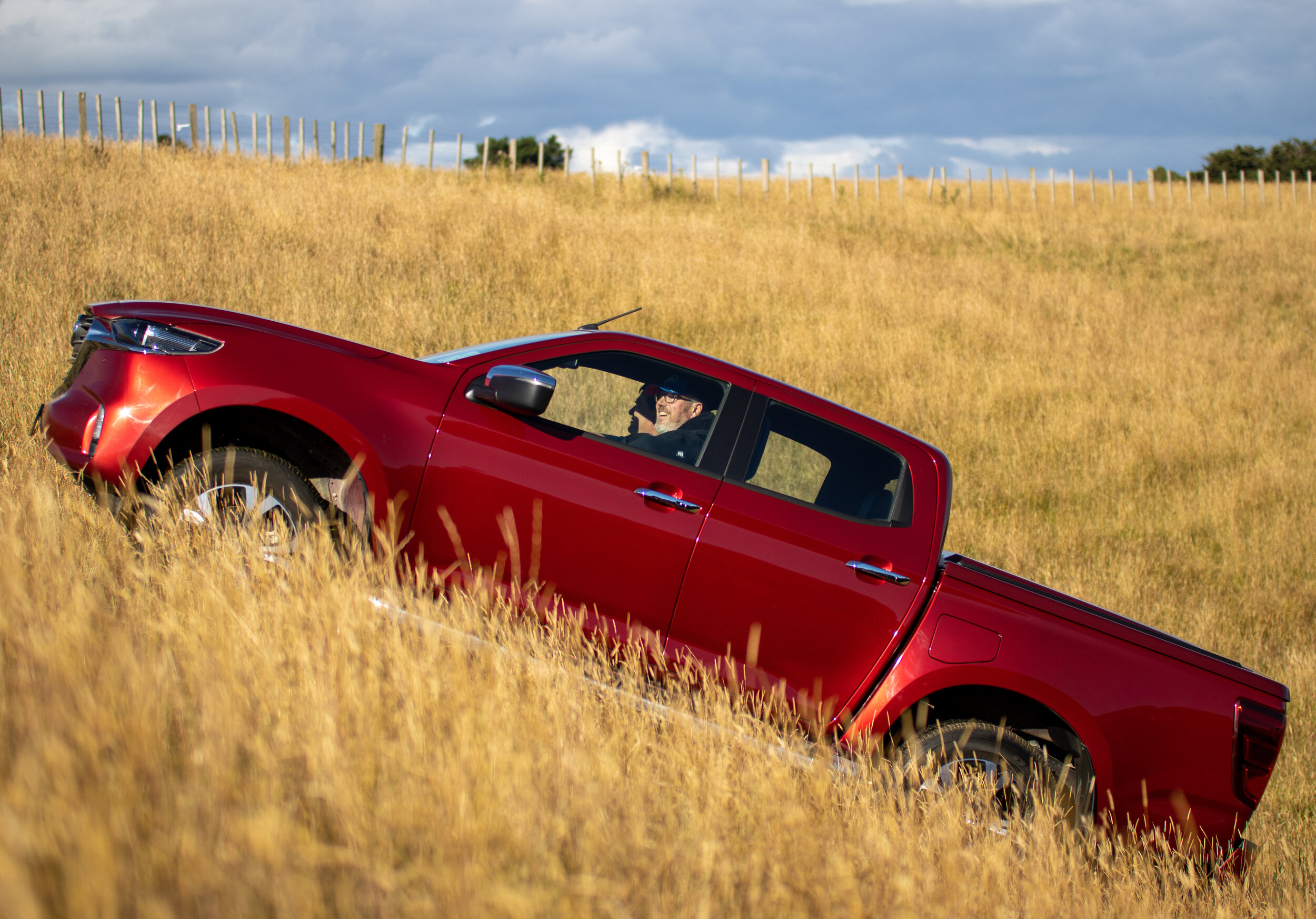
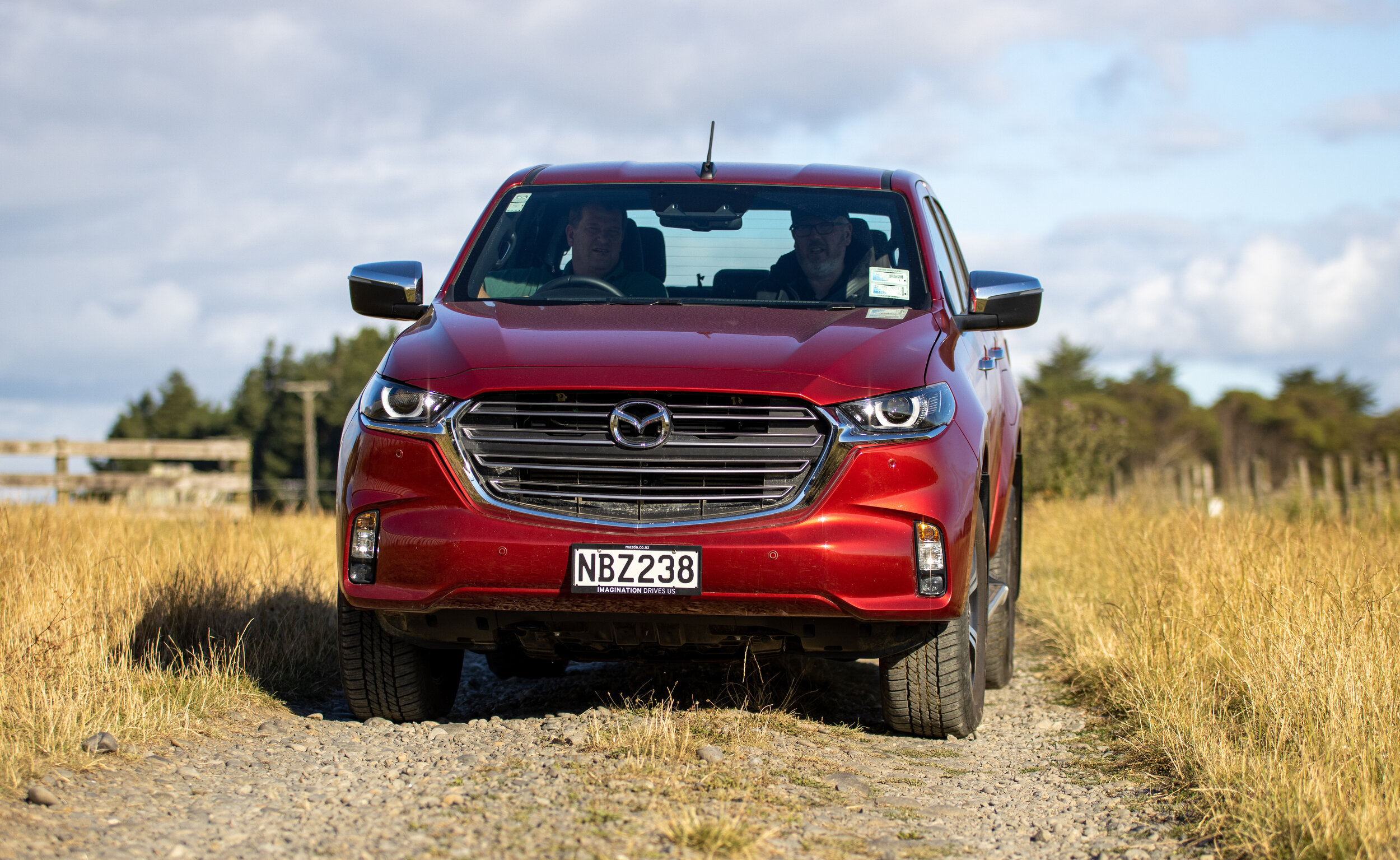
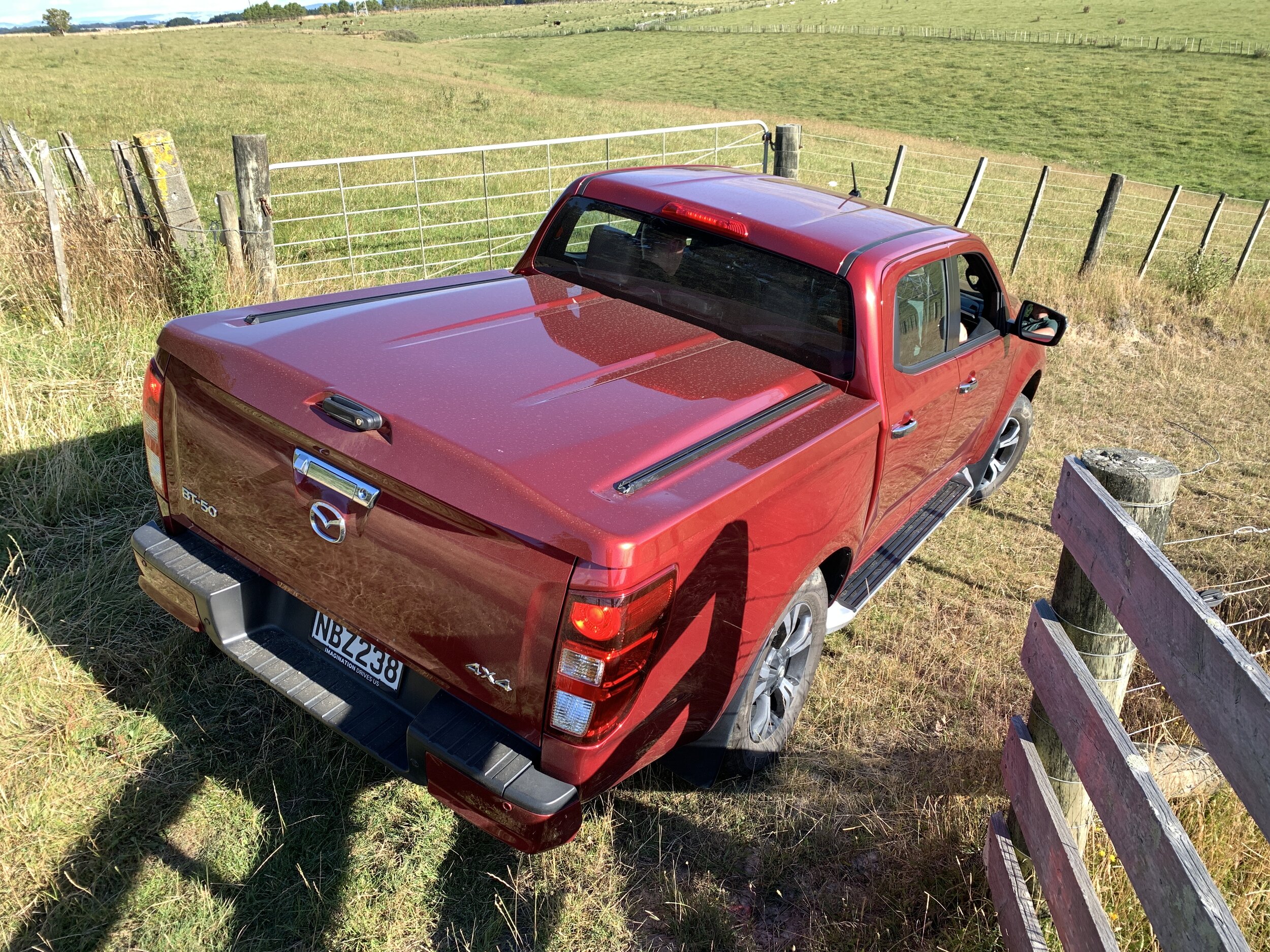
Turning back to a ute basic, the deck design is identical in each model and while there’s not enough space between the wheel-arches for a pallet (1165mm by 1165mm), it’s a deep compartment with good tie-down options but only one finishes the job by providing a deck liner for no extra cost. Go to the X-Terrain and you that get as standard as part of a dress up kit that also provides roof rails, fender flares, a rollout tonneau cover and an aero sports bar Mazda buyers will have to pluck from the accessories catalogue. Which is where the BT-50’s hinged deck hardtop came from. How much? Dunno.
Both models come with the highest possible towing capacity, and rate at 750kg for an unbraked trailer and up to 3500kg for a braked trailer, with a tow ball down load of 350kg. We were eager to try them with something on the hook … but neither came with tow bars.
For the most part, both were mainly driven without any load, which seems a shame but is probably a reality for many top-end utes; the kind of deck cover Mazda has really enforces them being used that way.
So cars they became. And yet, cars they not. As much as the term ‘car-like’ carries serious conviction in how they outfit, there’s less sophistication in respect to how they drive, but first focus will be on the new 4JJ3-TCX powertrain.
An all-new engine with a bigger capacity than most other motors offered in this part of the market, the models’ 3.0-litre arguably delivers more bonuses for those coming from the Isuzu camp than for those out of the old BT-50 who enjoyed the Ford-provided 3.2-litre five-cylinder.
Either fan group might think this engine is a bit quieter than what they’ve each been previously used to, but only the Isuzu supporters will consider it gruntier. From a Mazda point of view, you’re going from a mill that was surprisingly alert for the type to one with less immediacy, particularly in respect to low to medium speed responsiveness. It’s a dramatic decrease, but one that is easily noticed nonetheless.
Once up into cruise, the power delivery is a lot more linear; it feels more settled if relaxed. A good aspect is that it doen’t consume a heap of diesel; a real world consumption figure of 9.0L/100km from a mix of urban, highway, country road and off-road driving for both seemed pretty good, really.
Yet it’s just not the zestiest choice in the category so owners are going to have to live with being jibed about the Ford Ranger Bi-turbo 2.0 litre and the revamped 2.8 litre Toyota HiLux having more muscle. It’s pointless getting into a fight over it; the others are going to win.
The revised six-speed automatic offers smart, quick and mostly smooth shifts, though it can be a little eager to shift a lot at higher speed. Opinion on test from all who experienced these is that the logic is trying to step between the higher gears to stay in its torque sweet spot. No doubt that’s partly to help save fuel, too.
In regard to the general driving demeanour, the work-first ethos that so flavoured the previous D-Max continues to show in the suspension tune. The ride is decent, but you can still tell it's a ute and expect jitters from the three leaf-sprung rear end without a load on board. A mate who compared his previous-gen BT-50 to the new reckoned the latest is a touch less polished in quelling surface texture feel, but nonetheless gave it high marks. Like me, he was also impressed by the steering; going from a hydraulic system to an electric setup makes the action considerably more driver-friendly than it was before. Still lots of feel and feedback through the wheel, but it’s no longer such a muscle-builder. You notice this especially in urban use. The turning circle is still large at 12.5 metres and it still takes quite a few turns lock-to-lock, yet it’s less of a chore.
The lane keep assist is right on top of its game; the camera that calls the shots picks up the most faded road markings, and tugs at the steering accordingly if you seem set to cross the line. Sometimes you’ll think it’s too much of a busy-body, but the intentions of this, the blind spot monitoring and rear cross traffic alert systems, are good. The latter work really well and are handy both at open road speed and when pulling out of parking spots.
Regardless that this product has some irksome issues, whichever badge you sit behind, you’re driving a winner. It’s a shame the Isuzu has been left out to dry by Mazda’s aggressive pricing, but that’s not say the BT-50 is assured all the spoils. For all the good stuff it delivers, it might yet cop criticism for not delivering a full-out Mazda identity.
These makes have read the market well with these models: Plush automatic diesel doublecabs have been fantastic sellers for much of the past decade; it was only a matter of time before others decided they deserved to wrest some of the action off the Ford Ranger and Toyota Hilux.
Of course, no gold rush lasts forever and the terrain these models are tackling might be more precipitous that it seems. Government’s push for a CO2 cleanup won’t be beneficial to utes - this engine isn’t the smuttiest but falls behind by having DPF regen (which takes 10 minutes) rather than an AdBlue approach - and any review of the level of fringe benefit tax evasion that is rumoured to fuel so much ute take-up would also undoubtedly present an unwelcome climate change.
Still, while the going’s good, these are a very good go-to.



























